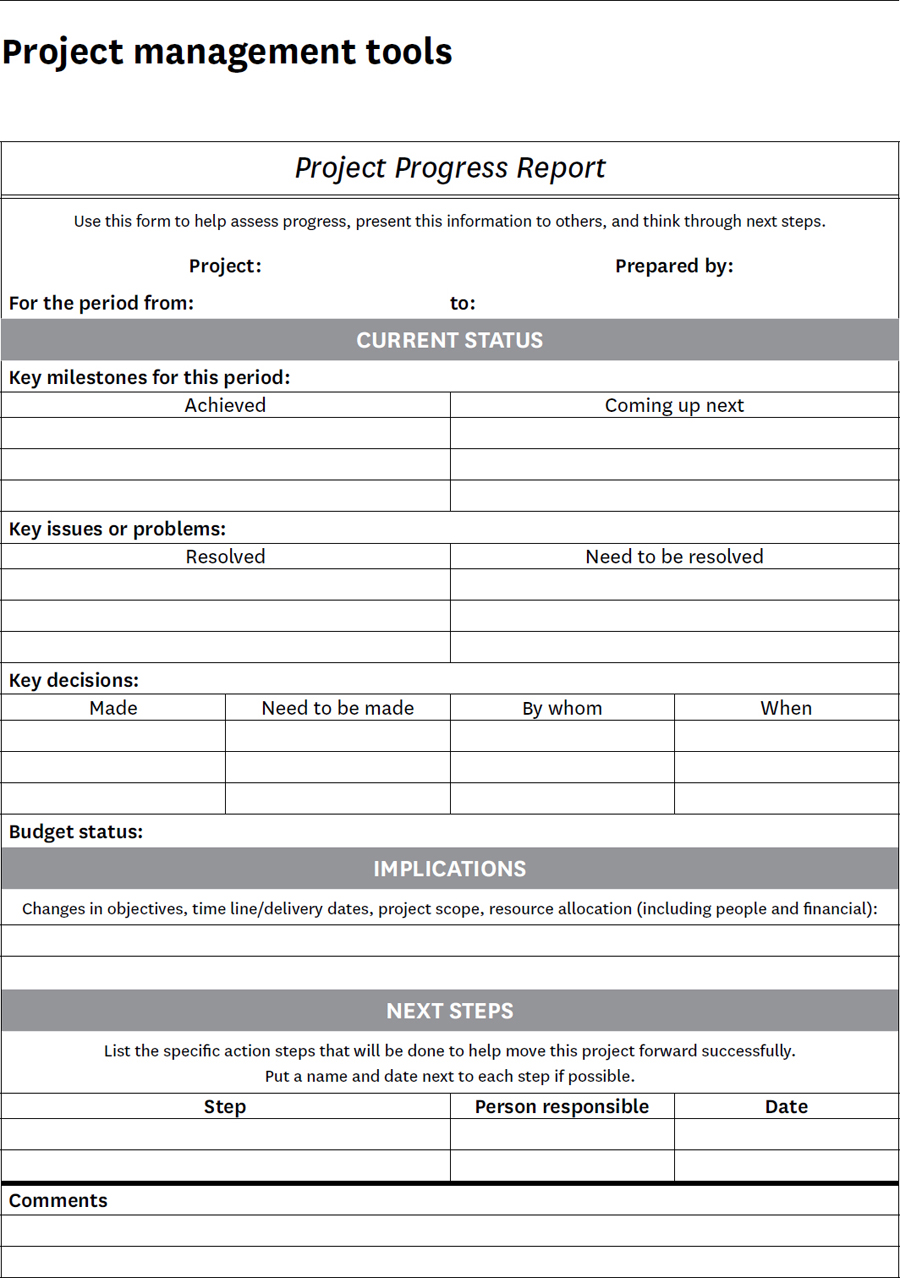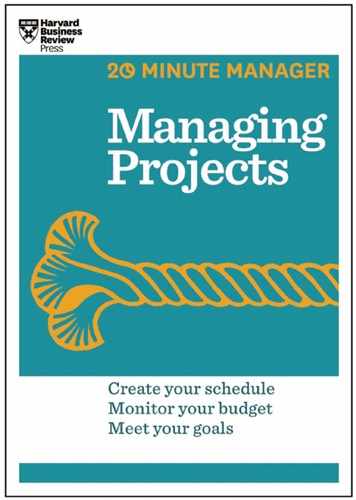In the implementation phase, where you’re managing and monitoring your project against the plans and preparations you’ve made, you have to maintain a positive attitude to keep your team motivated. You also need to watch carefully for barriers, bottlenecks, and foul-ups. It can be a tough balancing act. You and your team will see progress in this phase—the work is actually being done. But the details can at times feel tedious, even overwhelming, and potential pitfalls are always lurking around the corner.
Let’s look at some ways to maximize the progress and ease the stress.
If you thought you could plan for everything, you should probably be locked up. You have to be aware, attuned to what’s happening, what’s changing—and part of that is being obsessive, being on top of the details. You have to be aware of change so you can utilize whatever it is that just changed, because it might be an opportunity. And you have to monitor change so you can avoid risk downstream.
—Timothy O’Meara, director, telecommunications company
Delegate—but track results
In the planning phase, you assembled your team and assigned responsibilities to each member. But as you implement your plans, you may find that you need to delegate more tasks than you originally anticipated. Be flexible enough to make adjustments as you go.
Deciding what to delegate
You’ll delegate two kinds of tasks. The first consists of routine activities that pretty much anyone on the team can do. With these, you want to ensure that everyone shoulders a fair portion and no one is saddled with all the mundane work.
What’s the second kind? Tasks that require specialized skills. If any of your team members possess these skills, you can delegate such activities to them. If not, you may need to hire outside experts.
As project manager, you’re responsible for the overall project. So don’t delegate tasks that only you can perform, such as monitoring the budget.
Managers used to monitor their subordinates closely, telling them what to do every step of the way. The system was called “command and control.”
Most companies these days have given up that kind of management for something more like “trust and track.” You assign tasks to team members, and you make sure everyone has the skills, information, and resources they need to succeed. Then you back off and let them do their jobs. But you ask for regular (short) reports on what they’ve done, and you monitor their progress against the schedule and budget, as described in the following sections.
Monitor progress against the schedule
Whether you do it by hand or use project management software, you need a systematic method of checking off tasks as people complete them. No single monitoring system works for all projects. One that’s right for a large project can easily swamp a small one with unnecessary complexity. And a system that works for small projects won’t have enough muscle for a big one.
Most project managers use software for everything except very small undertakings. But which program is best—and which features you need—depends on the size and scope of your project. Do some research and make inquiries before you decide what to use and how to use it.
Focus on what’s important
As you track the details of a project, it’s easy to get lost in the weeds. Keep asking yourself the following questions to maintain a big-picture view:
• What do we need to accomplish with this project?
• What activities are essential to its overall success?
• Which elements are the most important to monitor?
• Where are the major bottlenecks?
• Where must we place controls to keep things on track?
Emphasize timely information
To respond usefully when problems or unexpected events crop up, you need to receive quick, frequent progress reports. Ideally, you’ll be updated in real time so you always know exactly where the project stands. In many cases, however, you’ll have to rely on weekly updates. Just be sure those come in on time and accurately reflect the status of each task.
Be prepared to take corrective action when something goes off the rails; otherwise, all you’re doing is monitoring, not exercising control. But don’t jump in too quickly. Allow your team members to work out most problems on their own.
Every project has milestones along the critical path. Milestones are, simply put, the points at which something should have been accomplished, with dire consequences if it hasn’t been. The responsibility for meeting milestones may be someone else’s, but the failure to meet them reflects badly on you and your team. As project manager, you are accountable for failures in a project even if you didn’t cause them.
—Martin Nemzow, high-tech consultant
Monitor progress against the budget
One of your most important responsibilities is tracking the budget. Regardless of how carefully you have planned, actual costs rarely match what you have budgeted. Good project managers maintain the original estimates as a reference point, but they also keep a running tally of where they have run over or under budget. If they see that the total budget is likely to exceed the original amount, they make their case as soon as possible to whoever holds the purse strings—with a clear explanation as to why they’ll need more money.
When monitoring actual costs, watch out for these common contingencies, which can upset your original estimates:
• Unanticipated price hikes from suppliers and subcontractors
• Estimates based on different costing methods—for example, hours versus dollars
• Unplanned personnel costs required to keep the project on schedule, including increased overtime
• Unexpected training costs
• Consultant fees to resolve unforeseen problems
As real expenses start rolling in, watch for significant deviations from budgeted amounts. Then find out the reason for the differences.
Not all budget news is bad. When you monitor your budget against real costs, you may find that you are actually spending less than expected. Everybody likes to hear that kind of news, as long as the agreed-upon work is being performed to the appropriate quality standards.
Ensure quality control
Quality assurance will play a major role in the success of your project. The last thing you need is a client, customer, supervisor, or other stakeholder who is dissatisfied with the end result. How to ensure quality? A few guidelines will help:
• Determine quality benchmarks in the planning phase. Consider the quality policy of the organization, stakeholder requirements, the scope of the project, and any external regulations or rules.
• Don’t rush quality checks to meet deadlines. The cost of fixing problems after the fact is usually far greater than the cost of confronting and solving problems early on.
• Examine deliverables using the most appropriate tools—for example, detailed inspections, checklists, or statistical sampling.
• Accept or reject deliverables based on previously denned measures. Rejected deliverables can be returned or reworked, depending on costs.
Report progress to stakeholders
Back in the planning phase, you agreed with your stakeholders how and when you’d present your updates. As the project progresses, consult with them to make sure you’re giving them the right amount of information in a useful format. Your journey to completion will be smoother without unhappy stakeholders demanding more or different information. Try using a guide, such as the one shown in figure 5.
If you hide or downplay problems as they come up, they may grow into full-blown crises, becoming twice as big as they would have if you’d alerted your stakeholders early on. So be honest with them at every step. They may even turn out to be useful resources, offering help to fix the problems.

